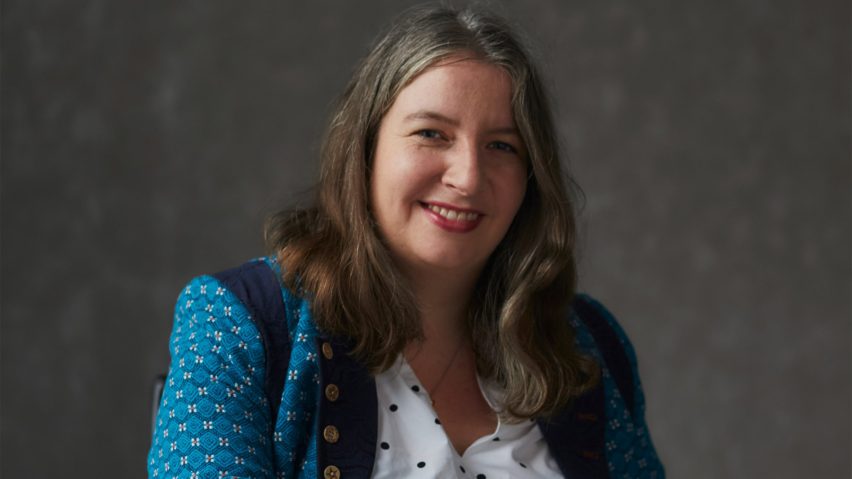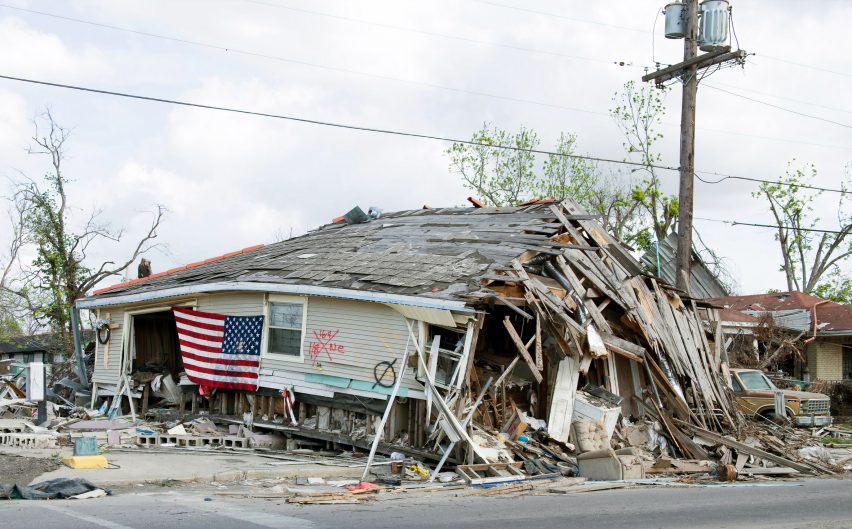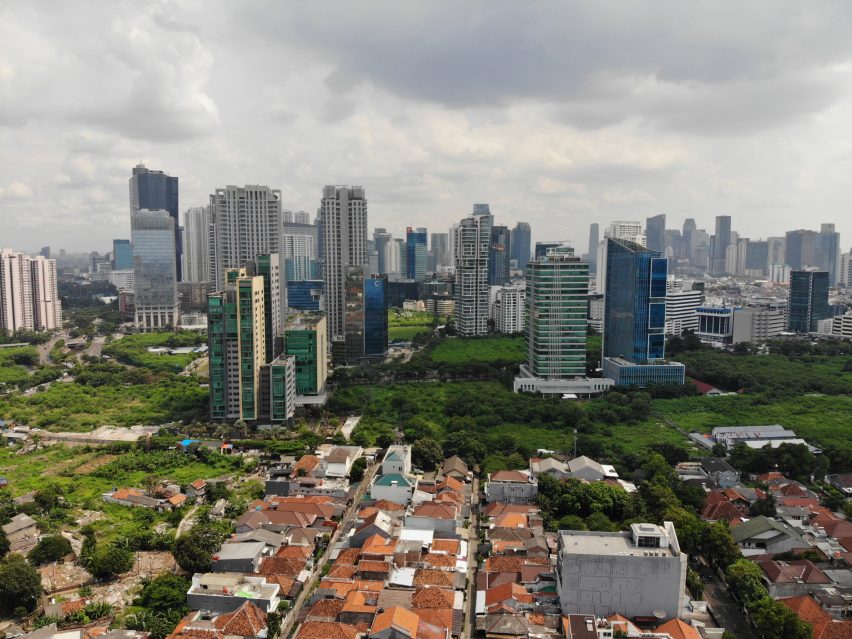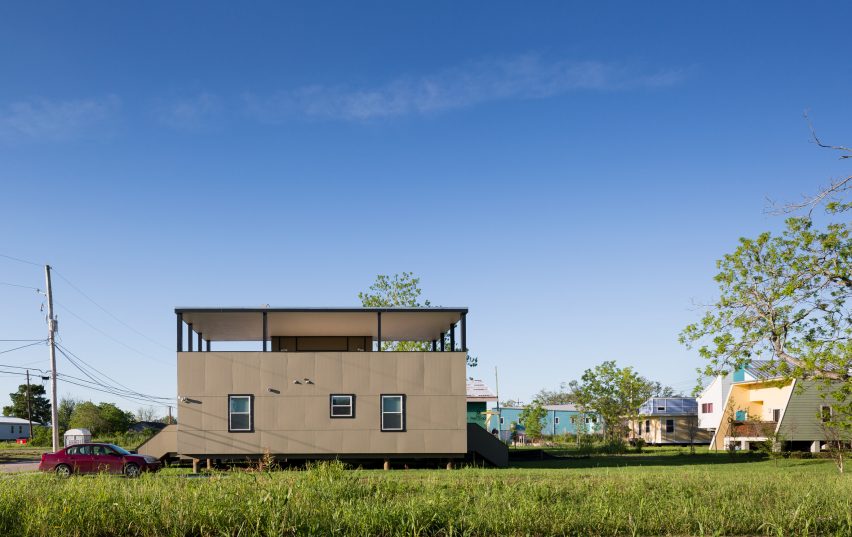
Disasters "very rarely not a design failure" says expert Lucy Easthope
Emergency planner Lucy Easthope explains why she gets "chills at the back of the neck" when hearing that architects are working pro bono on disaster recovery in this interview conducted as part of Dezeen's Designing for Disaster series.
Easthope is the UK's leading disaster expert, having advised the government and the military on responses to every major disaster involving British citizens for the past two decades.
A professor at Durham University, she co-founded its After Disaster Network, and has also written two books on the subject of disasters, most recently When the Dust Settles.
"The death toll is often human-created"
Like many of her peers, Easthope is staunchly opposed to using the term "natural disasters" to describe the devastating effects of events like floods, wildfires and earthquakes.
"People have traditionally tended to categorise geographical and seismic and climate events as 'natural', but what we see is that the disaster itself is usually human-made," she told Dezeen.
"The tectonic plates will shift or the sea will surge, but the death toll is often human-created, because of decisions made politically or economically."

She draws little distinction between the main causes of the devastating Turkey-Syria earthquake earlier this year and the deadly Grenfell Tower fire in London in 2017 – both, she argues, were disasters resulting primarily from corner-cutting within the construction industry.
Hurricane Katrina, meanwhile, is not a story about a weather event to Easthope, but about "systemic state-failing in terms of the catastrophic failure to upkeep the levees".
"Almost all of the deaths that I see are a failure of design," she said.
"I would go so far as to say that what 'natural disasters' have done over the years is simply cloak massive design failings. For me, it's very rarely in some way not a design failure."
One major part of the problem, Easthope contends, is a chronic human difficulty in thinking seriously about the worst that can happen.
"People kind of fundamentally stop themselves before they get to the reasonable worst-case scenario," she said.
"That's very much a failure of imagination. It impedes our planning, and it's one of the things that's impeding our design."
For designers in particular – for example, architects working on projects in places prone to flooding or wildfires – a testing mental balancing act is required.
"You can be incredibly imaginative and incredibly exciting and incredibly innovative and push the boundaries of 'failure is not an option', while simultaneously preparing for it to go very wrong," Easthope said.
"I think that's a real challenge in design, to hold both thoughts simultaneously."
Global North "arrogant" about risks
As climate change accelerates, there is wide consensus among meteorologists and emergency planners that extreme weather events are likely to become increasingly common and severe.
In Easthope's eyes, this means that planning for disaster is more important than ever.
"It's not pessimism, I think it's a healthy dose of realism – we will not solve this problem, we will have to find a way to live alongside it," she said.
That should be a concern for wealthy countries as well as poorer ones, Easthope argues, adding that the notion that the world's more developed economies are better prepared is a "myth".
Instead, she claims the Global North has much to learn from the Global South when it comes to disaster management.

"The only thing really that Britain and America and Europe do is we're much more arrogant about how well we're going to defeat this risk," she said.
"Basically, in the countries that this is happening to right now you either adapt or you die, and so they're doing things like managed retreat, they're rebuilding whole villages, they do turn their infrastructure design upside-down."
"We're seeing all kinds of things happening that I think are really brave and innovative."
She points to ongoing disagreements in California over the best way to deal with worsening wildfires while Indonesia energetically builds a new capital city in response to extreme land subsidence in Jakarta.
For designers and architects keen to aid the effort to mitigate and respond to impending climate-related disasters, Easthope has some stark messages.
"Sometimes you want them put off, bluntly," she said. "I very rarely want to see goodwill."
"When I hear, 'we've got a volunteer architecture firm and they're doing this pro bono' – chills at the back of the neck."
"I want you paid, I want you commissioned by the government, I want money from the reparations fund, I want your best effort, your best people."
By definition, disasters are highly difficult scenarios ridden with tough decisions and failure is likely to be catastrophic, so genuine expertise is vital.
Disasters "will always win"
If you are designing for disaster, Easthope cautions, you must be in it for the long haul.
Even well-intentioned projects can go awry – and for that reason, she is sceptical of competitions inviting the uninitiated to undertake disaster-related projects.
"Often when things go wrong it's people coming up with good ideas from the heart that are really lovely ideas, but have got this kind of hidden tail – and one of the areas most vulnerable to that is surely architecture and design," said Easthope.
"I think there's a responsibility here on the field for really probing critical thinking."
Readers may be reminded of the Make It Right Foundation fronted by Brad Pitt, which saw big-name architects design replacement homes in New Orleans following Hurricane Katrina.

The charity settled with residents of the homes for $20.5 million last year over a litany of issues including leaks, black mould and unstable foundations.
Another common issue is a failure to work effectively with impacted communities in the aftermath.
"We see architects brought in to reimagine a place after it's been destroyed and with almost no exception those meetings go terribly," said Easthope.
"And architects will stumble through and they're nervous and they use words that become very toxic like 'regeneration' – they often will erase, when actually what the community wanted was to enhance things that to the outside world may look undervalued and unnecessary."
Another thing to consider is that, in the case of disaster planning and management, the solution is not always new and innovative.
Easthope confesses to "delighting in the mundane" and "keeping what works".
Finally, disaster-related design can be punishing work, she warns.
"Be prepared to watch your projects burn down and wash away," she said. "You're designing things for a world that is very unstable. You don't get to win with disasters – they will always win."
Dezeen In Depth
If you enjoy reading Dezeen's interviews, opinions and features, subscribe to Dezeen In Depth. Sent on the last Friday of each month, this newsletter provides a single place to read about the design and architecture stories behind the headlines.

Designing for Disaster
This article is part of Dezeen's Designing for Disaster series, which explores the ways that design can help prevent, mitigate and recover from natural hazards as climate change makes extreme weather events increasingly common.